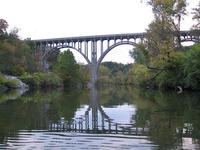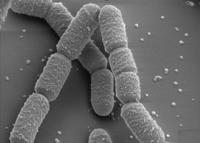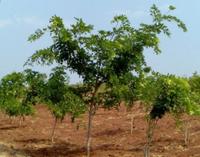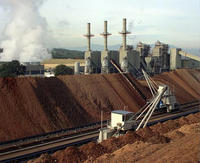-
New tool offer better flooding protection
There are more than 84,000 dams across the United States, and millions of Americans live behind them; if these dams and levees were to fail and unleash catastrophic flooding, as some did in New Orleans in 2005, a high price will be paid in life lost and property destroyed; DHS S&T and partners develop new software systems for fast simulation of catastrophic flooding
-
-
Five arrested in foiled Cleveland bridge bomb plot

Five men who considered themselves anarchists and angry at the government and corporate America were arrested after a foiled attempt to blow up a Cleveland area bridge; the five were planning on commemorating May Day, the international workers’ holiday, by destroying the bridge connecting two wealthy Cleveland suburbs
-
-
Slowing time as a way to counter cyberattacks
Researchers offer a new way to deal with cyberattacks on critical infrastructure like power and water utilities and banking networks: slow down Internet traffic, including the malicious code, when an attack is suspected; this would allow networks time to deal with the attacks
-
-
Maintaining bridges and improving safety on a budget
What if there was a way to improve the safety, durability, and sustainability of aging bridges across North America without increasing spending? Researchers say they have found a way to do so
-
-
Humble bacteria help create self-healing concrete

Scientists use a ground-borne bacteria — bacilli megaterium — to create calcite, a crystalline form of natural calcium carbonate; this can then be used to block the concrete’s pores, keeping out water and other damaging substances to prolong the life of the concrete
-
-
Biofuel tree offers abundant energy

The Pongamia trees require minimal nitrogen fertilizer, grow fast, show a strong tolerance to drought and salinity, plus they will not compete with prime agricultural land; Aussie researchers plan to plant 3,000 hectares of Pongamia trees in north Queensland, which will yield an estimated ten to fifteen million liters of biofuel
-
-
Clean drinking water for everyone, everywhere
Nearly 80 percent of disease in developing countries is linked to bad water and sanitation; now scientists have developed a simple, cheap way to make water safe to drink, even if it is muddy
-
-
Sensing technology helps prevent construction accidents
Researchers have developed a system that employs remote sensing technology to improve safety on construction sites by using tracking tags to monitor movements in real-time
-
-
Rapid test strips detect swimming water contamination

Water-testing technology has never been fast enough to keep up with changing conditions, nor accessible enough to check all waters; researchers have developed a rapid testing method using a simple paper strip that can detect E. coli in water within minutes; the new tool can close the gap between outbreak and detection, improving public safety
-
-
Waste-to-energy technology deployed in California

A new Anaerobic biodigester waste processor, which relies on bacteria to break down biodegradable waste material in the absence of oxygen, is deployed by a Sacramento, California company; it converts 7.5 tons per day of food waste from regional food producers, including Campbell’s Soup Company, and a half ton each day of unrecyclable corrugated material into natural gas; the system will generate roughly 1,300 kWh of renewable energy per day, meeting about 37 percent of the company’s electricity needs and preventing an estimated 2,900 tons of waste from entering landfills each year
-
-
Cyberattack disrupts Iran’s oil production system
The Iranian oil industrywas subject to cyber attack this past weekend,but the Iranian government saysit has contained and controlled the damage from the malware; this is the fourth known cyber attack on Iran’s civilian and military infrastructure
-
-
Safe fracking requires distance from sensitive rock strata
Fracking — the process which releases natural gas and oil from shale rock strata – is becoming more and more popular because it promises access to new, abundant sources of energy; the process of fracking, however, has been associated with increase in the frequency of earthquakes and contamination of drinking water; scientists examine thousands of fracking operations in the United States, Europe, and Africa, and conclude that in order to minimize water contamination and earthquakes, there should be a minimum distance of at least 0.6 km between a fracking operation and sensitive rock strata
-
-
New Iowa bridge equipped with damage-detection gauges
A new Iowa bridge is equipped with sensors which provide a large amount of quantitative information about the bridge’s performance and condition; these gauges take 100 readings a second for corrosion, strain, surface conditions, moisture within the steel arch, and structure movements over time; the bridge is also equipped to monitor the security of the structure and to record surveillance video; it is a structure monitoring model that could be used for other new bridges, including much larger ones
-
-
Identifying the sources of global sea level rise
As the Earth’s climate warms, a melting ice sheet produces a distinct and highly non-uniform pattern of sea-level change, with sea level falling close to the melting ice sheet and rising progressively farther away. The pattern for each ice sheet is unique and is known as its sea level fingerprint; now, geophysicists have found a way to identify the sea level fingerprint left by a particular ice sheet
-
-
New, vast source for electricity: rivers flowing into the sea
A new type of electric power-generating stations could supply electricity for more than a half billion people by tapping just one-tenth of the global potential of a little-known energy source that exists where rivers flow into the ocean
-
More headlines
The long view
Water Wars: A Historic Agreement Between Mexico and US Is Ramping Up Border Tension
As climate change drives rising temperatures and changes in rainfall, Mexico and the US are in the middle of a conflict over water, putting an additional strain on their relationship. Partly due to constant droughts, Mexico has struggled to maintain its water deliveries for much of the last 25 years, deliveries to which it is obligated by a 1944 water-sharing agreement between the two countries.
Trump Is Fast-Tracking New Coal Mines — Even When They Don’t Make Economic Sense
In Appalachian Tennessee, mines shut down and couldn’t pay their debts. Now a new one is opening under the guise of an “energy emergency.”
Smaller Nuclear Reactors Spark Renewed Interest in a Once-Shunned Energy Source
In the past two years, half the states have taken action to promote nuclear power, from creating nuclear task forces to integrating nuclear into long-term energy plans.
Keeping the Lights on with Nuclear Waste: Radiochemistry Transforms Nuclear Waste into Strategic Materials
How UNLV radiochemistry is pioneering the future of energy in the Southwest by salvaging strategic materials from nuclear dumps –and making it safe.
Model Predicts Long-Term Effects of Nuclear Waste on Underground Disposal Systems
The simulations matched results from an underground lab experiment in Switzerland, suggesting modeling could be used to validate the safety of nuclear disposal sites.
